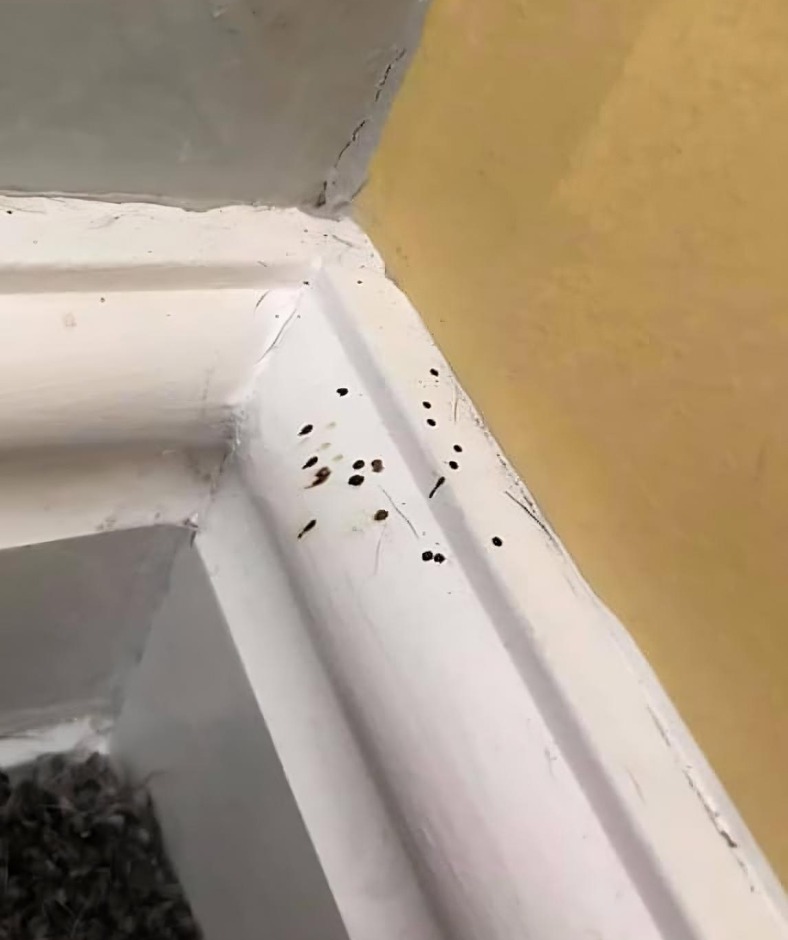A worried mother recently took to Facebook after spotting unusual black specks scattered around her home. She shared photos showing the tiny marks on her baseboards, wallpaper, and even the floor in a cleaning group, hoping someone could explain what they were and how to get rid of them.
She wrote, “Does anyone know what these are? They just appeared last week around my dining room baseboards and on the wallpaper. I mop the floor every day, and they still show up. They don’t feel raised—like paint, but definitely not paint.” Soon, many replied, and a popular answer quickly came forward: these were spider droppings.
Fans of cleaning and home care confidently identified the spots as spider poop. One comment read, “This is common this time of year. Spiders leave their droppings everywhere.” Others shared similar experiences, sometimes discussing whether fly droppings could look like this. One person insisted, “No doubt, it’s spider droppings!”
But what do experts say? Do spiders really leave droppings like this? Spider waste isn’t solid like you might expect. Instead, it’s more like thick, dark stains or ink spots. This can confuse people who have never seen these droppings before.
Spider droppings can vary depending on species but are usually small, uneven dots about the size of a pinhead. The colors range from black to brown, gray, or even white. Unlike solid feces, spider droppings often look liquid or smeared and tend to be found where spiders spin webs.
Spiders love dark, quiet corners where they can safely make webs, so their droppings often appear near baseboards, ceilings, or where cobwebs collect. Over time, these tiny spots can build up, becoming hard to remove and leaving unsightly stains.
People often wonder if these droppings can harm health. Though the idea may seem unpleasant, experts say spider waste doesn’t carry diseases to humans—even if the spider’s eaten infected insects. Still, it’s wise to be cautious.
Cleaning spider droppings should be done carefully. Wear gloves, clean with household cleaners, and wash hands thoroughly afterward. Fresh droppings are easy to wipe up, but older stains may stick and cause yellow discoloration, especially on porous surfaces.
Importantly, cleaning alone won’t fix the problem. Droppings mean spiders are living nearby. To stop them, keep your house tidy and uncluttered. Spiders like undisturbed places like basements or corners filled with cobwebs, so frequent cleaning, dusting, and removing webs is essential.
Check your home for openings—gaps around windows, doors, or vents—that spiders use to get inside. Seal them to block access. If spiders keep coming back, natural repellents like diluted vinegar or peppermint oil sprays may help. For serious infestations, professional pest control is the best option.
In summary, if you see strange black dots in your home, they’re likely spider droppings. While not dangerous, you should clean them promptly and work to eliminate the spiders causing them. Regular cleaning and blocking entry points are key to preventing their return. And if needed, don’t hesitate to call in professionals who can safely handle the problem.


